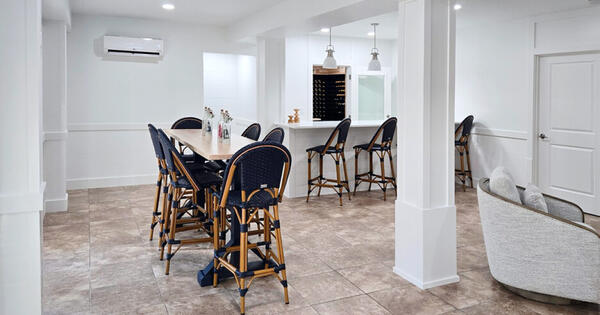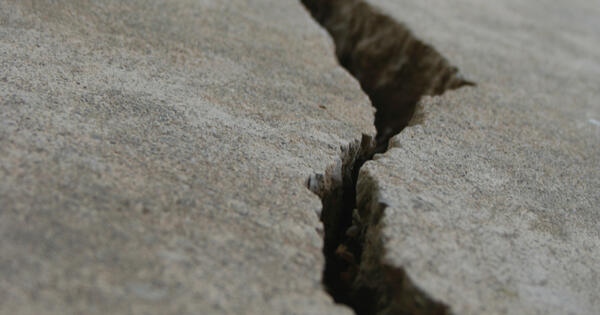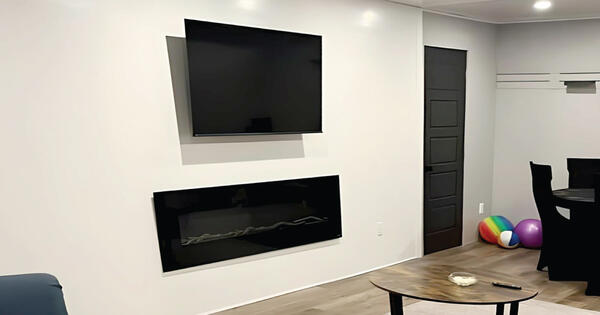Protecting your basement from water damage is one of the most important steps you can take to safeguard your home’s structural integrity and ensure a healthy living environment. Basements are often the first part of your home to feel the effects of flooding or water intrusion, making them vulnerable to costly and time-consuming damage. Whether you’re dealing with occasional dampness or full-blown flooding, taking preventive measures — like waterproofing your basement walls — can save you money, stress, and potential health risks down the line.
Water damage in basements isn’t just about ruining stored belongings or furniture. It can lead to mold growth, structural deterioration, and even affect your home’s resale value. Without proper protection, your basement can become a source of ongoing issues that are difficult to repair once the damage is done. Waterproofing is your first line of defense to keep water out and your home safe.
Understanding Basement Water Issues
Water intrusion in basements is a common problem, but it’s not random. There are a few key factors that make your basement vulnerable to flooding and moisture build-up. Recognizing these causes can help you prevent costly repairs in the future.
One of the primary culprits is hydrostatic pressure — when groundwater surrounding your home exerts force against the basement walls and floor. Over time, this pressure can find its way through cracks in the concrete or seams where the floor meets the walls, leading to leaks or seepage. Poor drainage systems, clogged gutters, or a high-water table can exacerbate this issue, creating a persistent problem for many homeowners.
Certain homes are naturally more at risk than others. Older homes often lack modern waterproofing systems, while homes built in low-lying areas or near bodies of water face higher risks of water intrusion. Soil composition and grading also play a role because poorly sloped landscaping can funnel rainwater directly toward your foundation, increasing the likelihood of flooding.
Types of Flood Risks That Can Affect Your Basement
Flooding can happen in a variety of ways, and understanding these risks is key to protecting your basement. From heavy rainfall to sewer backups, each type of flood risk comes with its own challenges — and the right waterproofing measures can make all the difference.
- Heavy Rainfall: When storms bring excessive rain, your yard can’t always absorb it all. This can cause water to pool near your foundation, increasing the likelihood of leaks or seepage.
- Snowmelt: Homes in colder climates face unique challenges as snow melts in the spring. The large volume of water generated during a quick thaw can overwhelm your home’s drainage systems, leading to water intrusion.
- Sewer Backup: When municipal sewer systems are overwhelmed, wastewater can back up into your home through basement drains, causing significant water damage and health hazards. Proper backflow prevention devices can reduce this risk.
- Poor Drainage: Inadequate gutter systems, downspouts that don’t direct water far enough away, and improper landscaping can all funnel water toward your basement walls instead of away from your home.
- Regional and Climate Factors: Homes in flood-prone areas, such as those near rivers or in regions with high annual rainfall or hurricanes, naturally face greater risks. Similarly, areas with clay-rich soil may be more prone to water retention, adding stress to your foundation.
By understanding these risks and taking proactive steps, you can significantly reduce the chances of water damaging your basement.

Signs Your Basement Walls Need Waterproofing
Recognizing the early signs of water damage in your basement can save you from costly repairs and extensive damage. While some issues may seem minor at first, they’re often indicators of larger problems lurking beneath the surface.
Look for these common signs of water damage:
- Visible Cracks: Small cracks in basement walls or the foundation may not seem like a big deal, but they can be entry points for water. Over time, these cracks can expand, allowing more moisture to seep through.
- Damp or Musty Odors: A persistent, musty smell in your basement is often caused by mold or mildew growth — both of which thrive in damp environments.
- Water Stains or Discoloration: Brownish streaks or discoloration on walls and floors are telltale signs of water intrusion.
- Efflorescence: This white, powdery substance appears when water evaporates, leaving behind mineral deposits. It’s a clear sign that moisture is seeping through your walls.
- Peeling Paint or Bubbling Drywall: Water can cause paint to bubble or peel away, and drywall to warp, signaling a moisture problem that needs to be addressed.
Taking action at the first signs of these issues can prevent further damage and protect your basement from future water intrusion.
How Flood Damage Can Impact Your Home
Flood damage doesn’t just ruin your basement — it can have far-reaching effects on your home and your family’s well-being. Failing to address water issues can lead to long-term problems that are costly and, in some cases, dangerous.
- Mold and Mildew Growth: When moisture lingers, mold and mildew can develop quickly, releasing spores that may cause respiratory issues, allergies, and other health problems.
- Structural Issues: Over time, repeated exposure to water can weaken your foundation and walls, leading to cracks, bowing, or even structural failure.
- Damage to Home Systems: Basements often house essential systems like HVAC units, water heaters, and electrical panels. Flooding can damage or destroy these components, leading to expensive replacements.
- Decreased Home Value: A history of flooding or visible signs of water damage can lower your home’s resale value, making it harder to sell.
Addressing water damage early — and investing in solutions like Trusscore Wall&CeilingBoard — can prevent these issues and give you peace of mind during heavy rains or unexpected flooding.
Methods for Waterproofing Basement Walls
Waterproofing your basement walls is a critical step in protecting your home from water damage. Depending on your specific situation, there are several methods and materials to consider, each with its own benefits and challenges.
- Interior Waterproofing: This method involves applying sealants to the inside of your basement walls. While it’s effective at managing minor seepage, it doesn’t address the source of the water outside your home.
- Exterior Waterproofing: A more comprehensive approach, this involves excavating around your foundation to apply waterproof coatings or membranes. It’s highly effective but can be expensive and labor-intensive.
- Drainage Systems: Interior or exterior drainage systems, like French drains, help redirect water away from your foundation, preventing it from building up against your walls.
- Waterproofing Materials:
- Liquid Sealants: Easy to apply and cost-effective, liquid sealants are ideal for small cracks and minor seepage but may require regular reapplication.
- Membranes: Thick, durable membranes applied to the exterior of your foundation provide long-lasting protection but require professional installation.
- Drainage Panels: Installed along your basement walls, these panels direct water to a sump pump or drainage system, keeping your walls dry.
For the best results, many homeowners use a combination of methods — sealing walls from both the inside and outside, and incorporating proper drainage systems.
The Role of Trusscore Wall&CeilingBoard in Flood Protection
When it comes to protecting your basement from water damage, Trusscore Wall&CeilingBoard offers a solution that’s both practical and reliable. Its innovative design and water-resistant properties make it an ideal choice for basements, particularly in areas prone to recurring water issues.
Here’s why Trusscore Wall&CeilingBoard is a standout for basement applications:
- 100% Waterproof Construction: Unlike traditional materials like drywall, Trusscore Wall&CeilingBoard is completely waterproof, meaning it won’t absorb water during a flood. This helps prevent long-term water damage and keeps walls intact even after significant exposure.
- Mold and Mildew Resistance: The waterproof surface not only prevents water absorption but also inhibits the growth of mold and mildew. This creates a healthier environment and reduces the risk of respiratory problems often associated with damp basements.
- Durable, Easy-to-Clean Finish: The smooth surface is stain-resistant and simple to wipe clean, ensuring your basement walls maintain a fresh, polished appearance even after flooding.
- Simple Installation: Trusscore panels are lightweight and feature tongue-and-groove edges, making them easy to install over existing walls or as part of a new build. They’re perfect for DIY enthusiasts or professional installers.
If your basement is prone to flooding, Trusscore Wall&CeilingBoard provides a low-maintenance, long-lasting defense against water damage, helping you safeguard your home and maintain a clean, functional space.



Additional Tips for Basement Flood Protection
Waterproofing walls is a key step in flood prevention, but pairing it with other strategies can enhance your basement’s overall protection. Implementing proactive measures can help keep water out and minimize potential damage.
Consider these additional steps:
- Install a Sump Pump: A sump pump removes water that collects around your foundation, preventing it from pooling inside. Choose a model with a battery backup to ensure it functions during power outages.
- Upgrade Your Drainage System: Interior or exterior drainage systems, such as French drains, can redirect water away from your home’s foundation. Combined with waterproof walls, they provide a robust defense against flooding.
- Optimize Landscaping: Ensure the ground slopes away from your home to reduce the risk of water pooling near your foundation. Installing water-loving plants around your yard can also help absorb excess moisture.
- Maintain Gutters and Downspouts: Clean gutters regularly and extend downspouts to direct rainwater away from your home. This simple step can prevent water from accumulating near your basement.
- Seal Foundation Cracks: Apply a high-quality sealant to small cracks in your foundation to block water from seeping through.
By integrating these strategies with waterproof walls like Trusscore Wall&CeilingBoard, you’ll create a comprehensive approach to protecting your basement from water damage.
Comparing Trusscore Wall&CeilingBoard to Other Materials
Choosing the right wall material for your basement is crucial, especially when considering the risks of water damage. Trusscore Wall&CeilingBoard stands out when compared to traditional materials like drywall or tile.
Here’s how it measures up:
- Durability: Unlike drywall, which becomes soggy and weak when exposed to water, Trusscore panels retain their structural integrity. Tiles may resist water but are prone to cracking and grout deterioration.
- Waterproof vs. Water-Resistant: Drywall is not water-resistant and requires costly repairs after a flood. While tile offers some water resistance, the grout lines can absorb water, leading to mold growth. Trusscore is 100% waterproof and doesn’t allow water to penetrate — making it a superior option for flood-prone basements.
- Ease of Maintenance: Cleaning drywall after water damage is nearly impossible, often requiring full replacement. Tiles demand regular grout sealing to maintain their water resistance. Trusscore panels, however, are easy to clean and require no additional upkeep.
- Cost-Effectiveness: While the upfront cost of Trusscore Wall&CeilingBoard may be slightly higher than drywall, its longevity and minimal maintenance make it a more cost-effective choice in the long run.
By choosing Trusscore Wall&CeilingBoard, you’re investing in a durable, waterproof solution that outperforms traditional materials, ensuring your basement stays protected and looks great for years to come.
Common Mistakes to Avoid When Waterproofing a Basement
Waterproofing a basement is a crucial project that demands careful planning and execution. However, homeowners often make mistakes that undermine their efforts, leading to persistent water issues or costly repairs.
To avoid setbacks, watch out for these common mistakes:
- Overlooking the Root Cause of Water Issues: Many homeowners seal basement walls without addressing external problems like poor drainage or grading. Fixing the source of water intrusion is just as important as waterproofing the walls.
- Using the Wrong Materials: Not all waterproofing materials are equally effective. Relying on paint-based waterproofing solutions or subpar sealants can lead to leaks down the line.
- Neglecting Proper Installation Techniques: Improper application of waterproofing membranes or materials can create gaps or weak spots, allowing water to seep through.
- Ignoring External Waterproofing: Focusing only on interior solutions without considering external measures — like foundation sealing or French drains — can limit your waterproofing success.
- Skipping Professional Help When Needed: While DIY methods may save money upfront, certain waterproofing projects require professional expertise, especially if structural repairs are involved.
Before starting your project, evaluate the scope of the work. DIY waterproofing can be effective for minor issues, but for comprehensive protection or recurring problems, hiring a professional can save time, money, and headaches in the long run.
Protecting your basement from water damage doesn’t have to be overwhelming — it just takes the right approach and materials. By understanding the risks, identifying signs of trouble, and investing in high-quality solutions like Trusscore Wall&CeilingBoard, you can safeguard your home against flooding and maintain a clean, dry space for years to come.
Don’t wait until water damage becomes a bigger problem — act now to protect your home and enjoy peace of mind.






